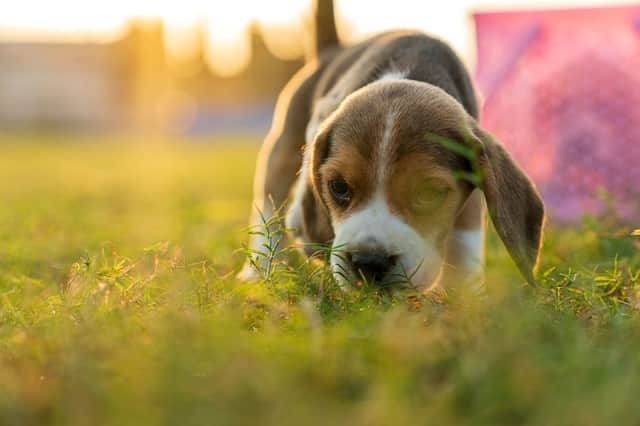Walking A Puppy For The First Time: Here's how to ensure your debut outing with your dog is a success


Taking your puppy for their first walk is an exciting milestone for both owner and pup.
While your puppy navigates its first steps and sniffs outside in the unknown, owners should start right away on lead training their pup, in a fun and engaging way before it is too late.
Advertisement
Hide AdAdvertisement
Hide AdHowever, teaching your dog lead manners can be tricky and miscommunication between you and your pooch can lead to frustration from both parties.
To avoid being yanked one way to another Lorna Winter, dog trainer and co-founder of puppy training app Zigzag, has shared her top tips to help navigate your puppy’s first walk.
Know when they’re ready for their first walk
Any new puppy owner will be eager to walk their pup but let’s not get ahead of ourselves – it might not be as soon as you think.
New puppies need to be protected from infections and vaccinations build up their immunity. There are a couple of core puppy vaccinations you’ll need to ensure your pup has. Check with your vet and make sure your pup is protected before you go outside.
Generally, your pup will have had their first shot with the breeder, and will need their second dose usually at 12 weeks old. After that, you’ll have to wait another two weeks before your pup is safe to go out into the world.
Start inside
First, start with puppy lead training inside the house and teach them that by your side is the right place to be. You can do this by having some treats in your left hand and your pup alongside you. Slowly walk forward with your puppy’s nose sniffing the treats in your hand. As they follow the treats with their nose, reward them by dropping them on the floor from time to time. We want them to associate walking beside you as good behaviour that will end with something yummy.
Keep your lead ‘smiley’: When the lead loops down loose, it will look like a smile between you and your dog. Have the lead in the opposite hand to the side you walk your puppy on. That way, you won't have to perform a contortionist act when handing them a treat.
Go at their pace
Start with taking your puppy outside for a few short and simple lead walks. Outside, puppies will want to sniff everything which can be quite distracting and will make it difficult for them to follow lead training. Some dog owners will find cheese or liver paste in a tube useful for lead training as you don’t have to bend down so far – a good tip for tall people and small dogs!
Advertisement
Hide AdAdvertisement
Hide AdDogs tend to like to walk very very slowly, or they like to walk quite briskly; regular human speed can be difficult for them to get the pace right. It’s important to go at your pup's pace, which may mean speeding up or slowing down your own pace to match.
Keep it short
For the first few walks keep it short and sweet. There is so much your puppy is processing, from loud traffic sounds to new smells. It can be a huge task to complete even a small walk. So make sure you keep your walks short to start with and build your pooch up for longer strolls.
If you’re unsure of how long to walk your pup for, one of the best rules to follow is 5 minutes of walking per month of age (maximum of twice a day), so a three month old pup 15 minutes twice a day, four months old 20 minutes twice a day, and so on until they reach adulthood.
Read the signs
It’s vital that in the early days of walking your dog you look for the signs of a distressed dog; sitting still, shaking, lead ragging/grabbing. Be mindful that your puppy may be anxious and don’t force them to do anything they don’t want to. Instead reward them with treats when they walk well and begin to head home when you can sense tiredness, frustration or agitation.
Spice it up and change locations
It’s very likely that you’ll want to take your puppy on walks other than to just your local park. When discovering new places, there are endless distractions that can make it difficult for your puppy to focus on walking well. To prepare for walking in new places, you’ll need:
- A puppy who has some idea that walking next to us predicts rewards and has practised that behaviour in easy locations first.
- Some high value treats to teach your puppy that engaging with us instead of everything else around them is worth their while.
- Owners should also avoid any distractions and focus their attention on their pup, as they will you. Phones away except for when taking cute pictures and videos!
Comments
Want to join the conversation? Please or to comment on this article.